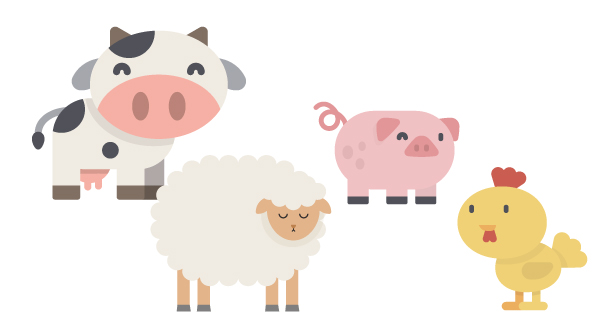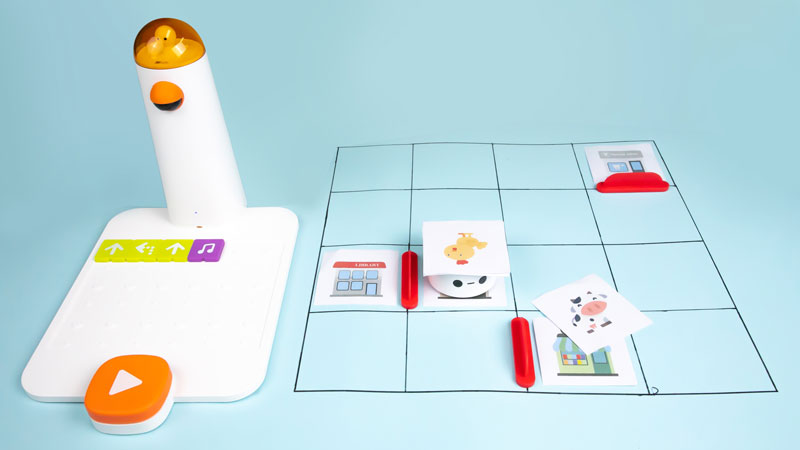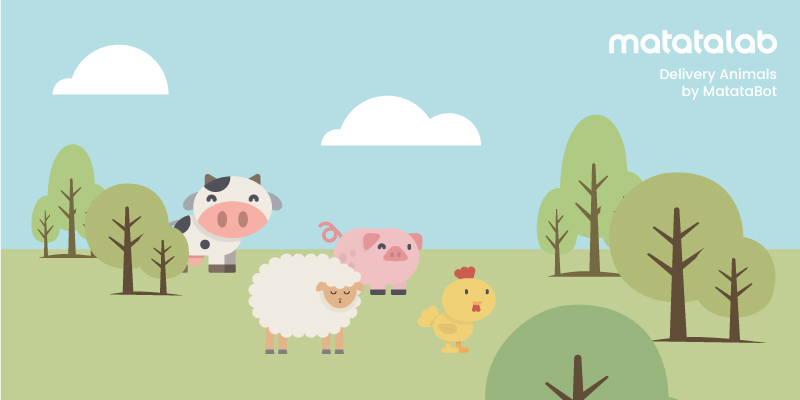Delivery Animals by MatataBot: Learning to Code While Studying About Farm Animals
We still remember the famous nursery rhyme ‘Old MacDonald Had a Farm’ and enjoyed making different animal noises to learn what they sound like. Moo-moo says the Cow and the Pigs say Oink-Oink, while the Chickens go Cluck-Cluck. By the age of 2 years, children start understanding rhythm and by the age of 4 years, they can sing it pit-pat. How wonderful it is to learn through song, dance, and music.
What are Farm Animals?
Animals that stay on the farm and help the farmer are called Farm Animals. They don’t harm humans, but help us in a variety of different ways. The farmer along with his friends (farm animals), work hard, day & night to grow crops and get a good yield, so that they can supply fresh vegetables, grains, and fruits, to satisfy the growing needs of our population. Kids appreciate the food on their plate, once they know where it comes from and understand the ardent efforts that go-on behind the scene.
Classification of Farm Animals
Avian Species:
This category includes birds that are generally taken care of, so that they can provide poultry. Some examples are; ducks, geese, turkey, swarms, and ostrich. They lay eggs, which are highly nutritious for our well-being.
Mammalian Species:
These include domesticated animals that stay on the farm to carry out laborious work such as tilling, irrigation, and carrying heavy loads on a cart. Bullocks, buffaloes, horses, and donkeys are part of the farm and act as a resourceful companion. On the other hand, pigs, goats, and sheep, cows, are also a part of this cluster, who provide livestock, i.e. meat and milk, for our consumption.
Aquatic Species:
Aqua means water, and thus, aquatic animals are those who stay in water. The farmer prepares a pond or an artificial lake to create a comfortable habitat for ducks, fishes, crabs, algae, and other such types. They are usually kept on the farm to supply sea food through fish farming occupation.

Taking Care of Farm Animals
Livestock management is an art of taking care of our buddies on the farms. Animals should be provided with good nutritious food, so that they can survive and thrive within the agricultural setting. Proper designated shelters must be made for different types of breeds. For example; sheep stay in pen, chickens stay in a coop, and cattle stay in a cow-shed. This protects them from having to face the harsh sunlight or rain, and keeps them cosy through the seasons. Bathing animals and maintaining hygiene is also an important lesson to learn.
Matatalab’s Delivery Animal Lesson
This lesson demonstrates ‘4’ different types of Farm Animals. Children have to identify their names, know what they sound like, and also call-out the shelter names for each of them. In this activity, students will transport these animals one-by-one to different locations. For example; take the cow to the pizza parlour, or take the pig to the paint shop, thereby creating a story-board around it. Matatalab is famous in Dubai and other GCC regions, and pre-schoolers seem to love the funny lesson plans, that go beyond conventional learning, and give them an opportunity to practice hands-on, while getting entertained. You’ll really enjoy listening to the stories our little one’s have to share

Learning to Code
The MatataBot has few arrow keys which indicate directions and the child must use the appropriate arrow key to move the animal from point A to point B. This develops the following understanding;
- Studying how to use coding blocks to program a particular path to reach the assigned destination.
- Becoming friends with MatataBot and doing-away with the fear of coding at an early age.
- Experimenting and applying different paths, for some extra fun
- Becoming storytellers and improving one’s imagination, creativity, and communication skills, which are key to students studying in K-12 schools across the Middle East.
Key Vocabulary Grasped
- Knowing that MatataBot is a ‘Robot’ and observing how Robots are useful.
- Mapping and direction, leads to spatial awareness among children.
- Giving command and instructions to a Robot, increases confidence.
- Words like; forward, backwards, rotation, 90 degrees, become an everyday lingo.
To learn more about the fantastic modules offered by Matatalab and get your hands on the kit, for residents of the UAE, kindly visit our website https://knowledge-hub.com/






Recent Comments